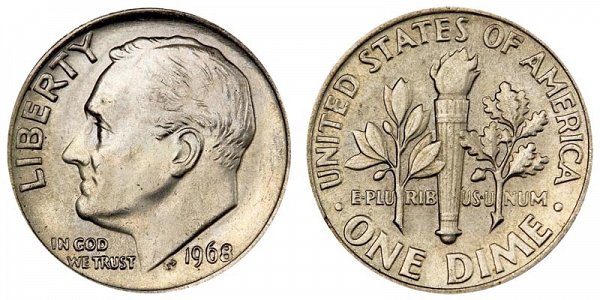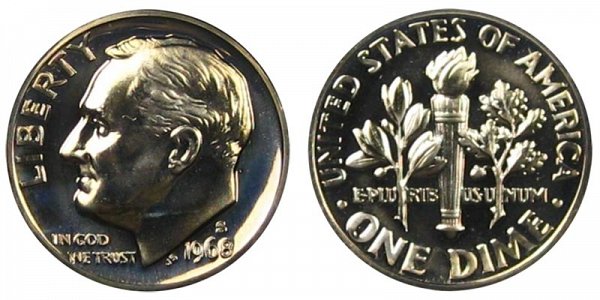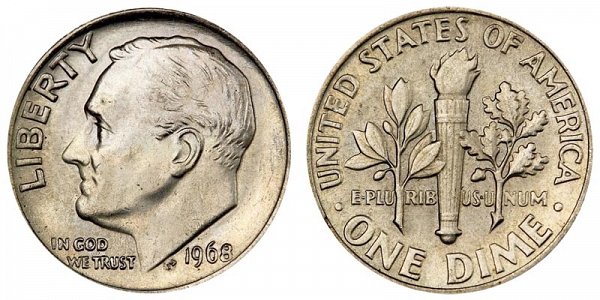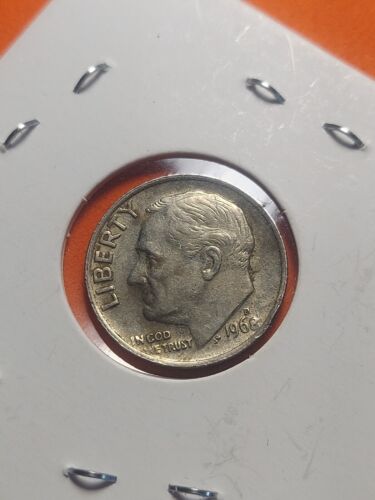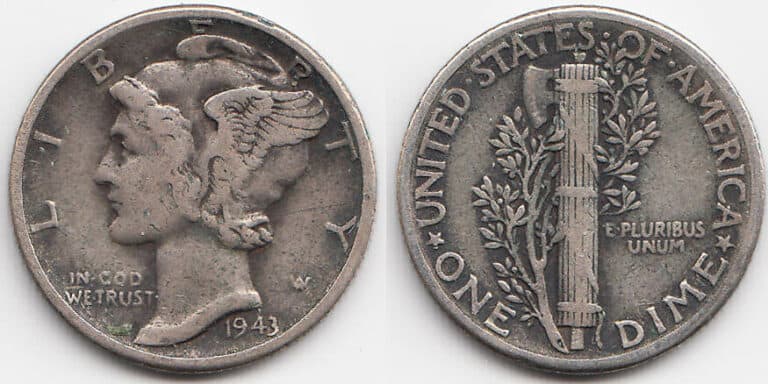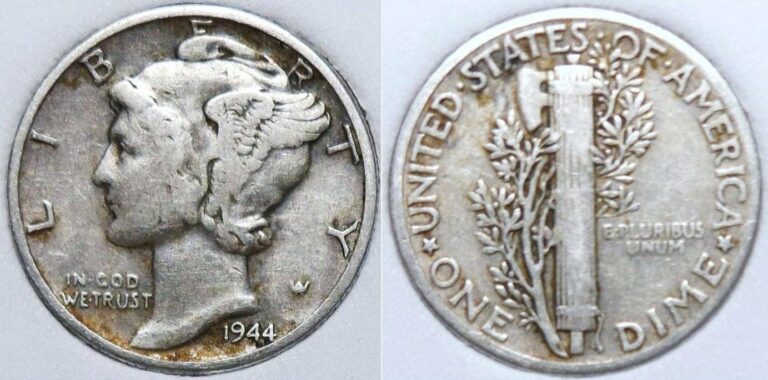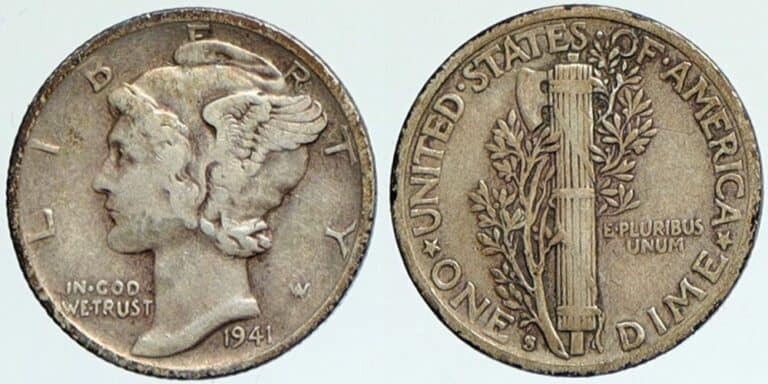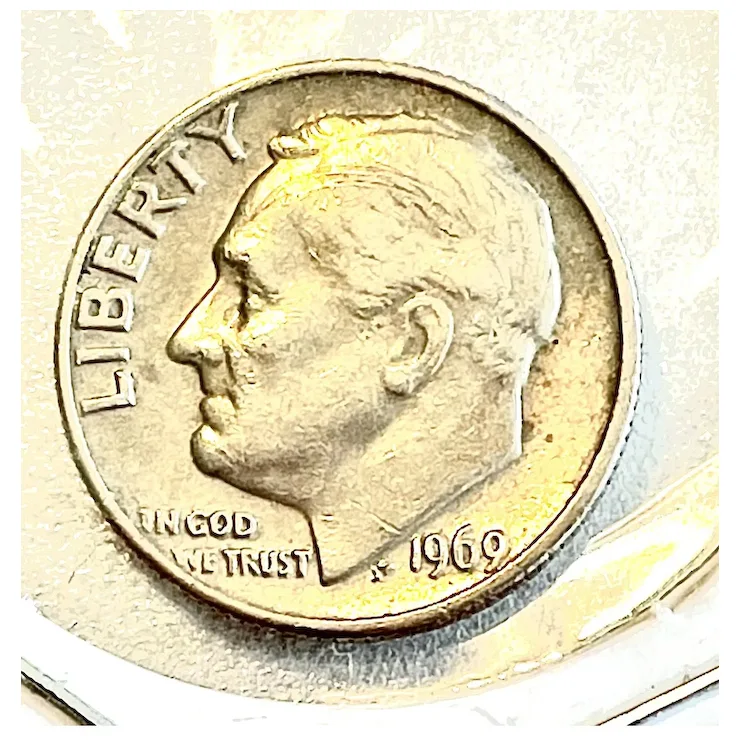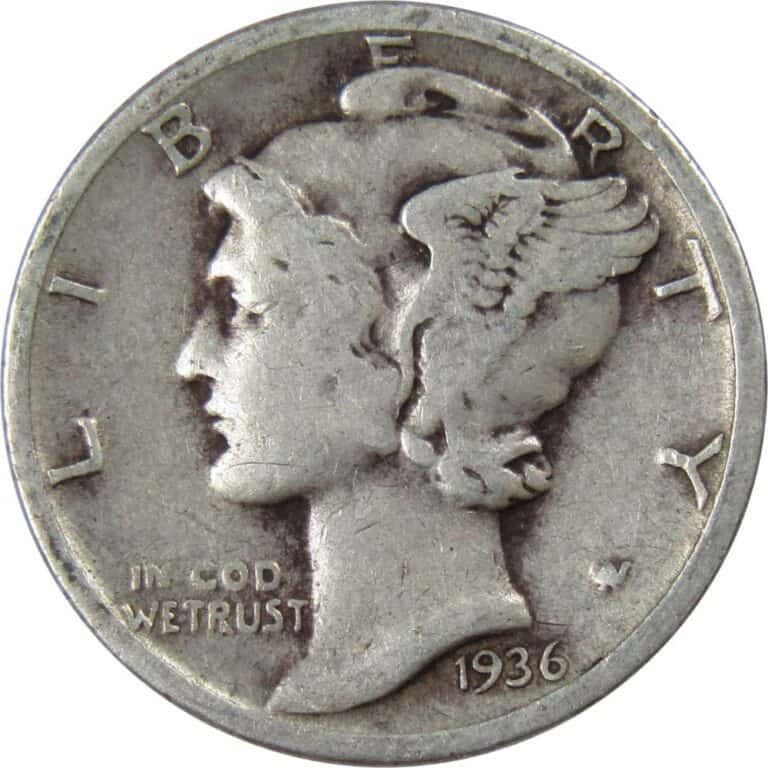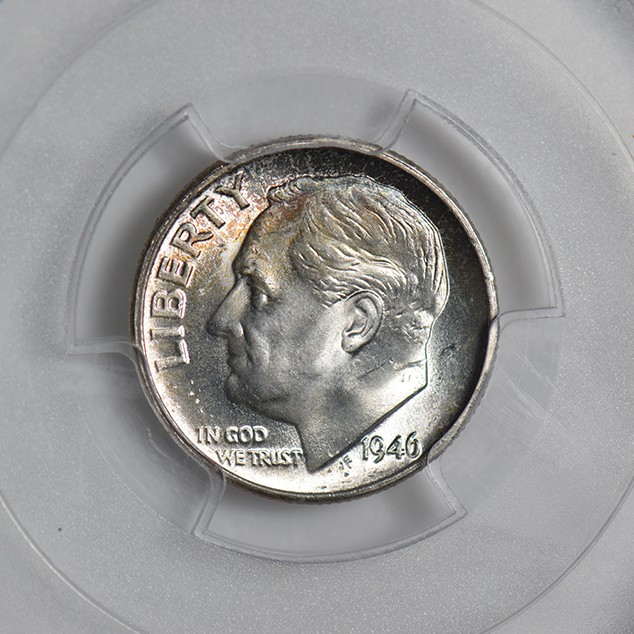1968 Dime Value: How Much Is It Worth Today?
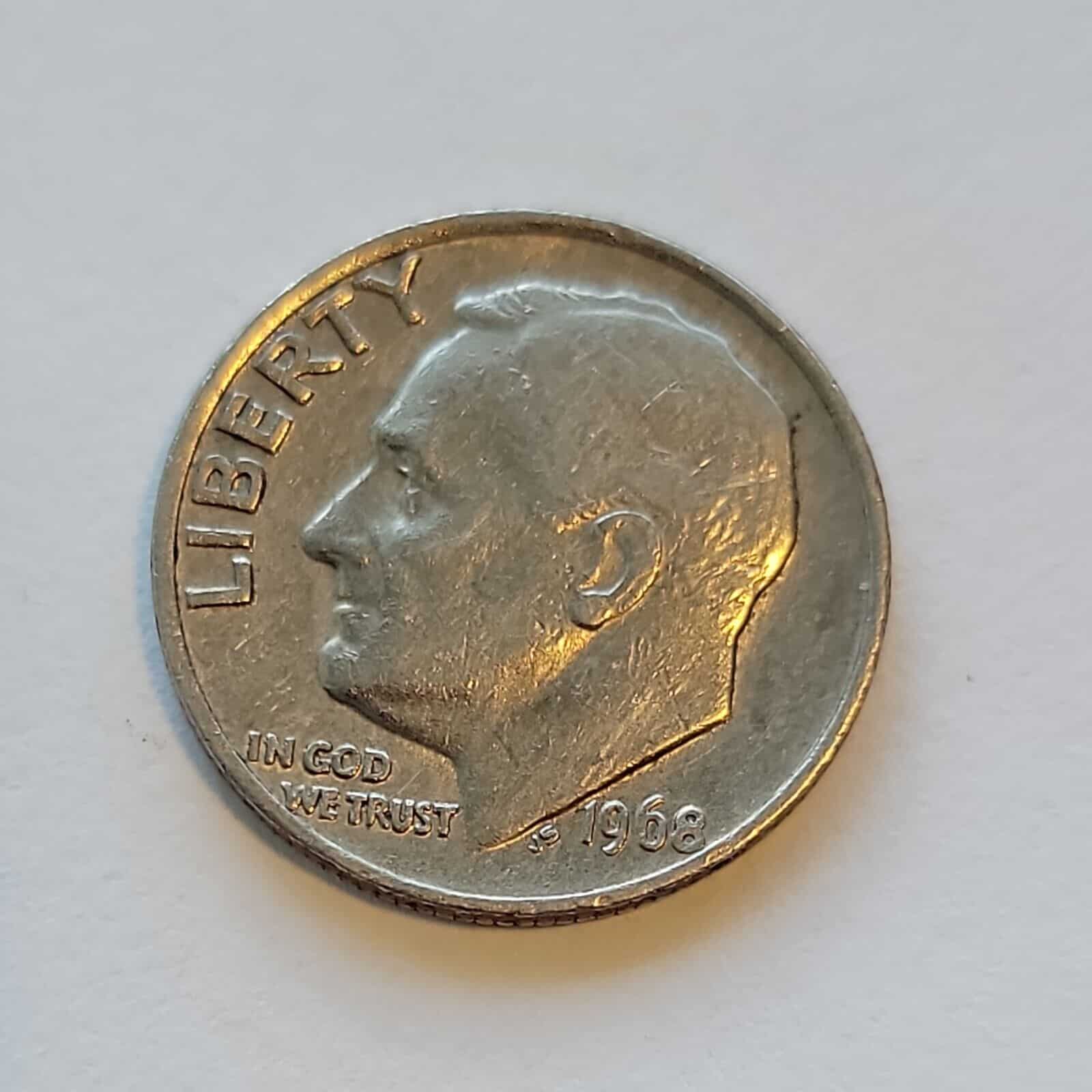
The famous Roosevelt dime has been in circulation ever since 1946 after the Second World War until today, at the time of writing this. Such dimes are still in wide circulation and almost every one of us has some in our pockets or wallets. Yet, this doesn’t mean that the Roosevelt Dime hasn’t gone through certain changes over the year.
One such change happened with the 1968 dime when the US Mint decided to switch the position of the mint mark on Roosevelt dimes – instead of putting it on the lower part of the reverse, mint marks on dimes would now be on the obverse side of the coin, just above the date. This minuscule change is made even smaller by the fact that not all dimes had mint marks back then anyway. Yet, it still makes the 1968 dime quite interesting for collectors.
1968 Dime Value Chart |
||||
| Mint mark | Good | Fine | Extremely Fine | Uncirculated |
| 1968 “D” Dime Value | $0.15 to $0.35 | $1 to $2.50 | $5 to $20 | $45 to $165 and above |
| 1968 Dime with No Mint Mark Value | $0.15 to $0.35 | $1 to $2.50 | $5 to $20 | $35 to $400 and above |
| 1968 “S” Proof Dime Value | $2.33+ | $2.33+ | $5 to $7 | $10+ |
| 1968 Proof Dime with No Mint Mark Value | n/a | n/a | $11,500 to $13,000 | $20,000 to $50,000 |
The vast majority of 1968 dimes you’ll find won’t be worth much more than their face value of $0.10. Some, that are preserved in relatively good condition, may be worth a bit more, up to even a dollar or a few if they look really good.
Regular dimes that haven’t made it into wide circulation because they’ve been grabbed by numismatists early on can be worth a nice chunk of coin – over $30 or $40 and up to a few hundred dollars if they feature certain rare manufacturing errors.
The big numbers associated with this coin, however – and why the 1968 dime is so famous – come from a small subset of this dime’s proofs.
While the San Francisco Mint made over 3 million proof dimes that aren’t really seen as all that valuable today, there are a few dozens of them that were missing the signature “S” mint mark of the San Francisco Mint – those few dozen coins easily get priced with 5-digit sums every time they are sold and bought today.
1968 “D” Dime Value
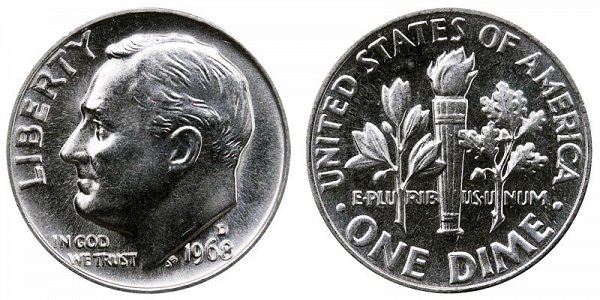
The Denver-made 1968 dime is easily recognizable thanks to the “D” mint mark above the coin’s date on the obverse side. While the Denver Mint’s mark is quite a common sight on many coins, here it’s noteworthy because in dimes prior to 1968, the “D” mark used to be at the bottom of the reverse side of the coin instead.
Aside from this small change, however, the 1968 “D” dime isn’t really different from its predecessors – it features the classic John R. Sinnock design on both the obverse and the reverse, it is made of a copper center clad with a nickel/copper alloy to give it its silvery color, it measures 17.9 mm in diameter and 2.27 gram in weight, and its edge is reeded.
The obverse design shows Roosevelt’s left-facing head with the word “Liberty” written in front of it, along the left edge of the coin. The words “In God we trust” are also on the left, just below Roosevelt’s chin, while the date 1968, alongside John Sinnock’s “JS” initials, and the “D” mint mark are on the lower right, just below the president’s neck.
Interestingly enough, the “JS” initials of John Sinnock had been the subject of quite a few conspiracies ever since the Roosevelt dime was first minted in 1946. That’s because – while Frank D. Roosevelt was overwhelmingly popular in his time for his handling of polio and for his economic policies, certain people on the right political spectrum disliked FDR for being a bit too left for their taste. In fact, a lot of such people didn’t think FDR deserved to be on any coin or piece of currency.
So, when the coins started getting minted with the “JS” initials on the obverse, a lot of people started spreading the conspiracy that “JS” actually stood for Joseph Stalin rather than John Sinnock as all this was taking place during the height of the Red Scare in the US.
What also contributed was the fact that John Sinnock himself was quite unwell while designing the coin and it’s believed that his then-assistant, Gilroy Roberts actually designed the coin. Such conspiracies lived on for decades and were still spreading even in 1968, more than two decades after the Roosevelt Dime’s first mintage.
As for the coin’s reverse – that’s also unchanged since 1946 – it features a torch, an olive branch, and an oak branch in the center, surrounded by the words “United States of America” and “One Dime”, as well as the motto “E Pluribus Unum” (“From many, one”) behind the torch and the two branches.
The Denver Mint made 480,748,280 of these coins in 1968 – a respectable number that hardly makes these coins “rare” but is quite a bit more than the billions of coins minted in 1967 and prior.
Because of all that, the 1968 “D” dime’s value is quite close to its face value unless the coin is still in its mint state and hasn’t been released into wide circulation. If there happens to be an interesting minting error on it too, a 1968 “D” dime can still sell for a few hundred dollars.
In fact, a 1968 “D” dime has even sold in the 4-digit range too – an MS 68 “D” dime from 1968 sold on eBay for $1,495 in June 2021.
1968 No Mint Mark Dime Value
The second most common variant of this coin is the 1968 Roosevelt dime with no mint mark on it. These coins were made by the Philadelphia Mint in nearly the same quantity as the “D” dime – 424,470,000 coins, to be exact.
The reason these coins have no mint mark rather than featuring a “P” for Philadelphia is that the Philly Mint didn’t use to make coins with mint marks for quite a while before the 1980s. So, while this sounds like some type of rare production error that should bump the coin’s price up (and it sometimes is – more on that below), in the case of the Philadelphia Mint dimes, that’s actually the norm.
Aside from missing mint marks, Philadelphia-made 1968 dimes aren’t really different from those made in Denver in any way. In fact, because Philly dimes didn’t have mint marks before 1968 either, the switch from a mint mark on the reverse to a mint mark on the obverse, isn’t really noticeable on Philly-made dimes anyway.
Still, there is a tendancy for 1968 dimes with no mint mark to be sold for a bit more than those with a “D” mint mark – the price difference is usually between a few dozen to a few hundred dollars, depending on the quality of the coin and the exact type of minting error it features.
What’s also interesting is that the highest-priced Philadelphia-made 1968 dime actually had the lowest possible quality grade – PO 1 on the Sheldon coin grading scale. Despite that – or rather, because of it – that coin sold for $1,200 on eBay in 2018. While this is lower than the highest-priced 1968 “D” dime, the averages are still higher for Philly-made dimes.
1968 “S” Proof Dime Value
As in most other years, the San Francisco Mint in 1968 focused on a smaller number of higher-quality coins called “proof dimes” – 3,041,506 proof dimes to be exact. As they were minted in San Francisco, they (or most of them) feature that mint’s “S” mint mark on the obverse side, right on top of the date.
The basic purpose of these dimes wasn’t to be in circulation but to be used as proof against fakes and counterfeits. The secondary idea of such coins was for them to be sold to collectors at higher prices as they were rarer and of higher quality. Plus, they are more expensive to make as they require entirely different minting dies and other hardware to produce.
What’s interesting about 1968’s proof dimes, however, is that they really aren’t all that more expensive than regular dimes made in Denver or Philadelphia. In fact, they are usually much less expensive, unless we’re talking about the lower quality grades where a proof dime will still be more valuable than a $0.15 dime.
The reason for this disparity is the presence of the fourth and incredibly rare variant of the 1968 dime – the no-mint-mark proof dime.
1968 Proof No Mint Mark Dime Value
These coins can be seen as “errors” as there is no record or explanation of their existence. In essence, these were supposed to be regular 1968 “S” proof dimes made in San Francisco but, for some unknown reason, they don’t have the “S” mint mark. That’s why they are also often called “the 1968 No S proof dime”.
That, plus the fact that there are very few such coins – just a few dozen are known today – makes them incredibly valuable. These coins will consistently sell in the thousands and tens of thousands of dollars and their price is only expected to rise in the future.
These no-mint-mark proof dimes are also mistakenly said to have been minted in Philadelphia as that mint is usually associated with the lack of a mint mark. They are made in San Francisco, however, alongside the 3 million regular proof dimes.
The chief theory for the lack of a mint mark is that the switch from a mint mark on the reverse to a mint mark on the obverse has somehow led to this minting “error”.
Similar errors have been observed in 1970 dimes, 1971 nickels, 1975 dimes, 1976 Ike dollars, and 1990 pennies too, however, the 1968 dime is the first time in history this has happened.
1968 Dime Grading
1968 dimes are graded just like any other coin – based on their visual quality, rarity, historical significance, and the presence of certain rare minting errors. Most appraisers use 1-to-70 scales such as the Sheldon coin grading scale. Here’s a good video for a more visual presentation on grading dimes.
Lists of 1968 Dime Errors
Putting the infamous 1968 no-mint-mark proof dime error aside, there are lots of other errors that can be present in a 1968 dime and can boost its value.
1968 Dime Double Die Error
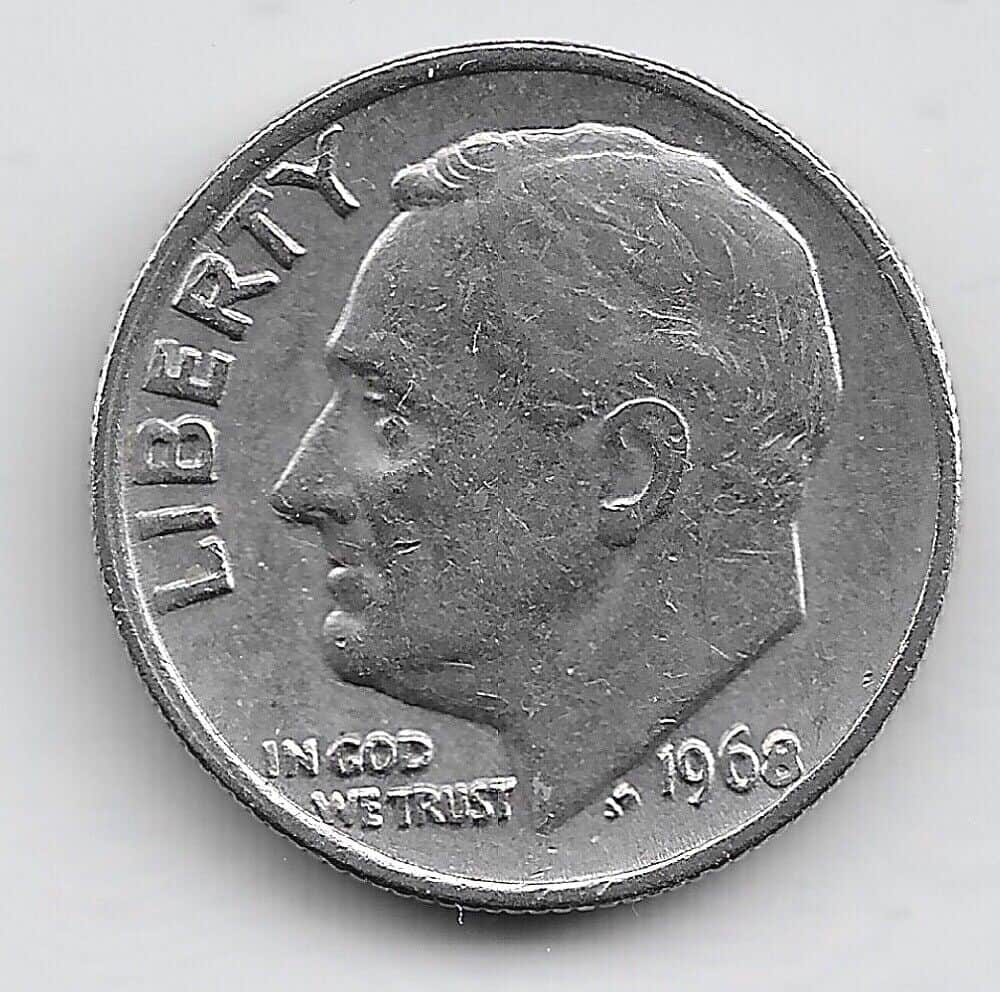
When this error occurs on a coin’s obverse side it’s called a DDO error and when it’s on the reverse – it’s a DDR error. In either case, this happens when there has been a slight shift in the die in between strikes. When that happens, the images and letters on the coin’s obverse or reverse can seem a bit blurry or distorted.
1968 Dime Off-Center Error
Similarly to a double die error, an off-center error happens when the coin’s planchet has shifted a bit before being struck by the die, resulting in either of its sides being minted not exactly in the planchet’s center.
1968 Dime FAQ
Is a 1968 dime rare?
Typically, no, not really. 1968 didn’t see the largest mintage of dimes but it was still quite substantial at nearly 900 million coins coming out of Denver and Philadelphia altogether.
When people are talking about rare 1968 dimes, however, they are typically talking about the several dozen or so 1968 proof dimes that were made in San Francisco but were missing the traditional “S” mint mark other proofs have. These dimes are so rare and historically significant that they often command prices in the 5-digit range.
Is there anything special about a 1968 dime?
Aside from the existence of the rare no-mint-mark proof dimes from that year, even ordinary 1968 dimes are quite special as that’s the year their mint marks were shifted from the reverse side of the coin to the obverse.
